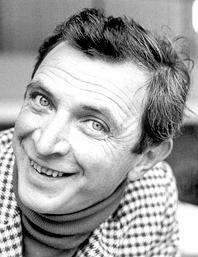John Cranko
| John Cranko | |
|---|---|
 |
|
| Born |
15 August 1927 Rustenburg, South Africa |
| Died | 26 June 1973 (aged 45) On board transatlantic flight |
| Occupation | Ballet dancer and choreographer |
| Parent(s) | Herbert and Grace Cranko |
John Cyril Cranko (15 August 1927 – 26 June 1973) was a South African born ballet dancer and choreographer with the Royal Ballet) and the Stuttgart Ballet.
Cranko was born in Rustenburg in the former province of Transvaal, South Africa. As a child, he would put on puppet shows as a creative outlet. Cranko received his early ballet training in Cape Town under the leading South African ballet teacher and director, Dulcie Howes, of the University of Cape Town Ballet School. In 1945 he choreographed his first work (using Stravinsky's Suite from The Soldier's Tale) for the Cape Town Ballet Club. He then moved to London, studying with the Sadler's Wells Ballet School in 1946 and dancing his first role with the Sadler's Wells Ballet in November 1947.
Cranko collaborated with the designer John Piper on Sea Change, performed at the Gaiety Theatre, Dublin in July 1949. They collaborated again for Sadler's Wells Ballet on The Shadow, which opened on 3 March 1953. This period marked a transition in Cranko's career from dancer to full-time choreographer, with his last performance for the Sadler's Wells Ballet taking place in April 1950. At 23 years old, he was appointed as resident choreographer for Sadler's Wells Theatre Ballet's 1950–51 season.
For the company's Festival of Britain season in 1951 Cranko choreographed the comic ballet Pineapple Poll, to the music of Arthur Sullivan (newly out of copyright) arranged by the conductor Charles Mackerras. Another collaboration with Mackerras followed in 1954 with The Lady and the Fool, to music by Verdi. In January 1954 Sadler's Wells Ballet announced that Cranko was collaborating with Benjamin Britten to create a ballet. Cranko devised a draft scenario for a work he originally called The Green Serpent, fusing elements drawn from King Lear, Beauty and the Beast (a story he had choreographed for Sadler's Wells in 1948) and the oriental tale published by Madame d'Aulnoy as Serpentin Vert. Creating a list of dances, simply describing the action and giving a total timing for each, he passed this to Britten and left him to compose what eventually became The Prince of the Pagodas.
...
Wikipedia
